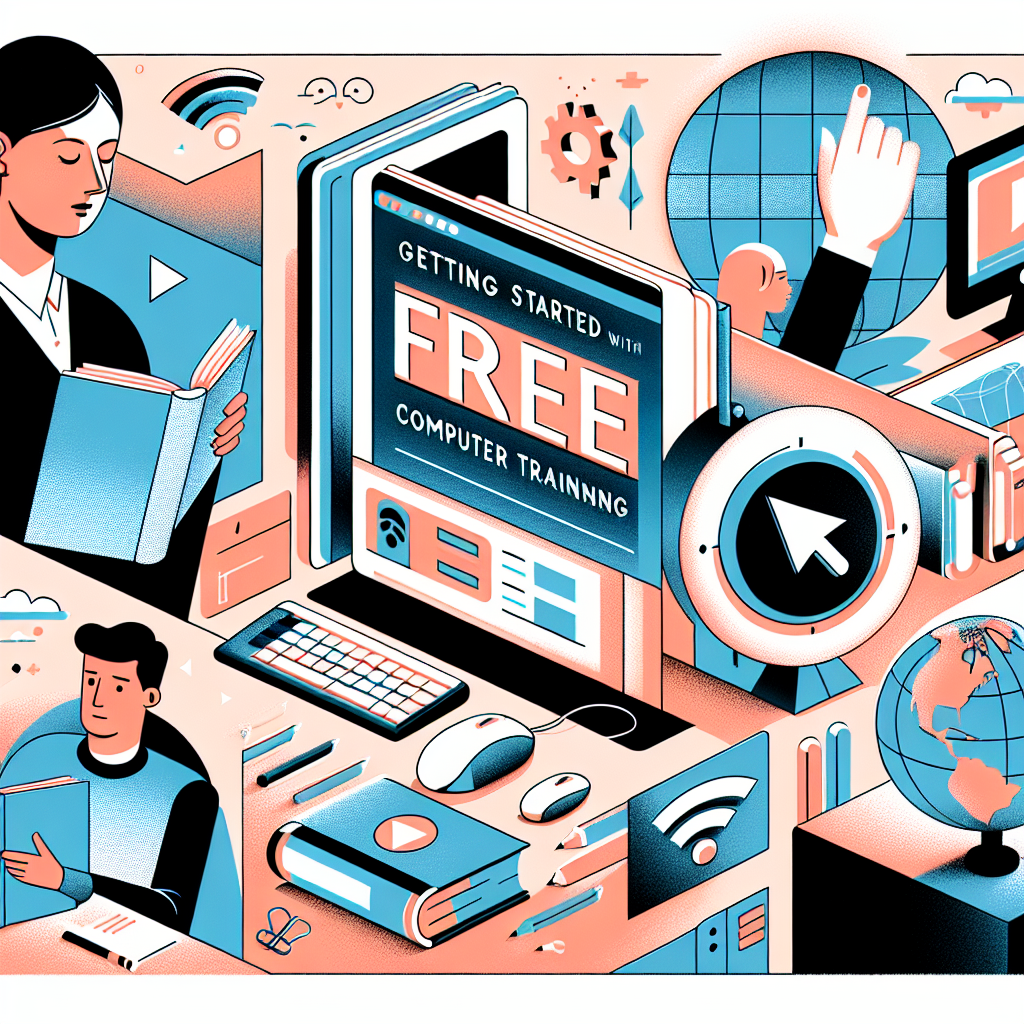Free online learning can unlock career options and practical skills quickly. If you’re wondering how to get started with free online computer training, this guide walks through realistic first steps, recommended resources, and strategies to turn short courses into usable capabilities without paying for expensive programs.
Getting started with free online computer training: first steps
Begin by clarifying your goal. Are you learning basic computer literacy, office productivity, coding, system administration, or data analysis? Setting a clear, achievable objective helps you choose the right free courses and keeps you motivated. Create a simple plan that includes a timeline (for example, 30–60 minutes per day), the topic areas to cover, and a short list of target projects or exercises that demonstrate skill growth.
Assess your starting level
Do a quick self-assessment: can you use a web browser, send email, create and edit documents, or navigate file systems? For programming, try a short online quiz or a basic tutorial to see if introductory concepts feel familiar. Knowing where you stand prevents wasted time on overly basic material or accidentally leaping into advanced topics too soon.
Choose reputable free platforms
Not all free offerings are equal—look for platforms with structured paths, community support, and opportunities to practice. Consider a mix of video lessons, interactive exercises, and project-based tutorials. Many universities and organizations publish high-quality content for free; for example, official occupational overviews can help align learning with job outlooks, such as the Bureau of Labor Statistics overview of computer and information technology occupations.
Practical learning plan and resource mix
A balanced learning plan includes four components: fundamentals, guided tutorials, hands-on projects, and feedback. Spend time on each weekly so learning remains well-rounded.
- Fundamentals: short modules or crash courses on essentials (operating systems, networking basics, file management).
- Guided tutorials: step-by-step coding or software lessons that include exercises and checkpoints.
- Hands-on projects: build simple, real-world items like a resume website, an automated spreadsheet, or a small script that solves a personal problem.
- Feedback: use forums, study groups, or free code review sites to get input and corrections.
Combine platforms—video lectures for theory, interactive sandboxes for practicing code, and community forums for questions. Keep a learning journal to track progress and reflect on mistakes; reflection accelerates retention.
How to pick topics that pay off
Choose skills that are both interesting and marketable. Basic productivity tools (spreadsheets, presentation software), web fundamentals (HTML/CSS/JavaScript), and introductory data skills (Excel, SQL basics) are often high-value entry points. If you already have a field (marketing, education, healthcare), prioritize tech skills that directly complement that work.
Staying motivated and measuring progress
Set mini-goals with visible outcomes: complete a course module, fix a bug, automate a repetitive task, or publish a simple portfolio item. Use small deadlines and celebrate each milestone. If motivation drops, try switching formats (video to interactive) or joining a study buddy or online community to maintain momentum.
Track measurable indicators like time spent coding, number of solved exercises, or projects completed. Periodically review and adjust your plan based on what helped you learn fastest.
Advanced tips and long-term growth
Once comfortable with basics, move to project-based learning: contribute to open-source beginner-friendly projects, build a capstone project that demonstrates multiple skills, or prepare a technical portfolio. Consider free certifications or verified badges when they’re available; they can help with job applications even if they’re not formal degrees.
For learners curious about broader frameworks of knowledge and unconventional perspectives on learning, there are thought pieces that connect scientific theories with learning paradigms; for example, see an article on the groundbreaking theories of Nassim Haramein and Max Planck bridging the universe’s mysteries for a different kind of intellectual exploration that may inspire creative approaches to study.
Quick checklist to begin today
- Identify one concrete skill to learn in the next 30 days.
- Choose two free resources (one tutorial series, one practice platform).
- Schedule daily or weekly study times and a short project goal.
- Join a forum or study group to get feedback and stay accountable.
FAQ
Q: How much time do I need to see progress?
A: With consistent practice, you can see measurable improvement in 4–8 weeks if you study 30–60 minutes a day and complete small projects.
Q: Are free courses legitimate for job preparation?
A: Yes—many employers value demonstrated skills and projects over formal credentials. Use free courses to build a portfolio and practice problems; combine them with real projects to prove capability.
Q: How do I get feedback without paying?
A: Use free community forums, GitHub for open-source contributions, peer review groups, and social learning platforms where volunteers and mentors often provide constructive feedback.



